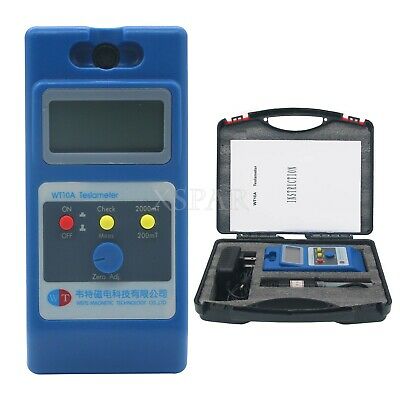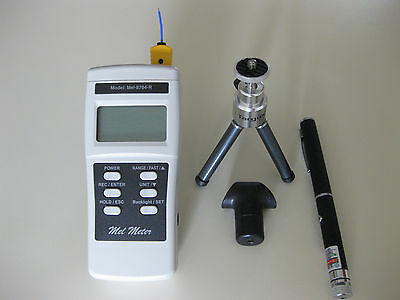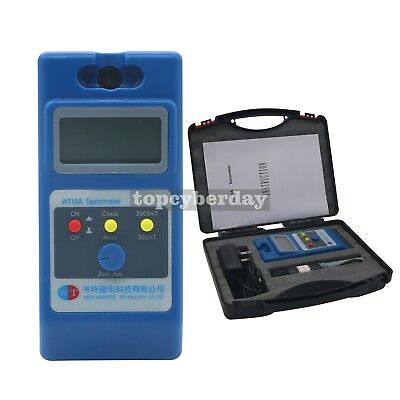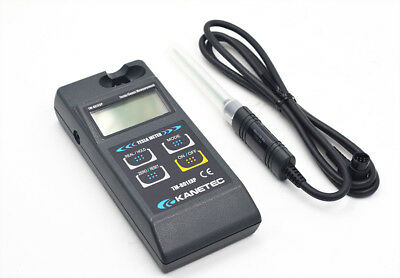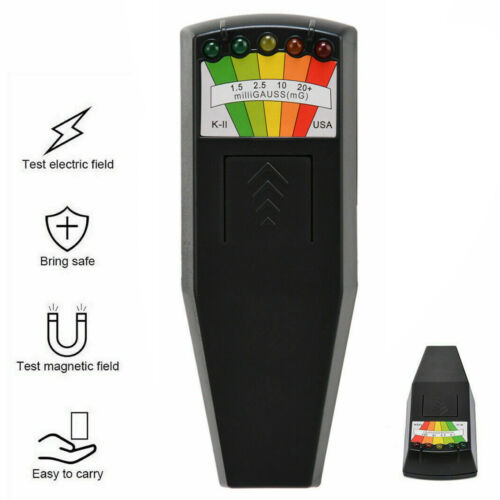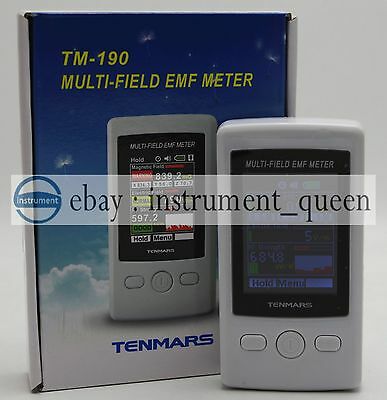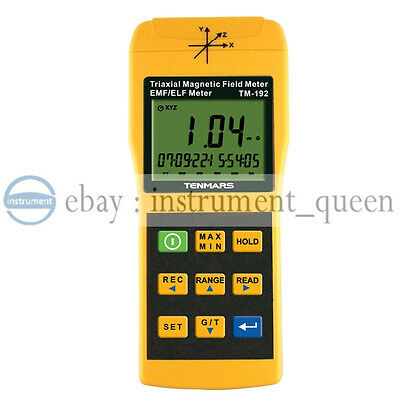-40%
AC GAUSSMETER MAGNETIC FLUX MAGNETOMETER TESLA METER
$ 187.43
- Description
- Size Guide
Description
AC Milligauss Meter Model UHSManufactured in the USA by AlphaLab, Inc.
A digital gaussmeter for precise measurement of AC magnetic field.
UHS Output Jack Description:
The optional output is a 1/8" (3.5 mm) phone jack (mono), which is similar to the jack for headphones. A plug is also supplied which has two bare wires to connect to your data acquisition system or oscilloscope. The output is a slowly-varying signal (1/4 second response time) proportional to whatever the display is reading at the time. It is positive only. For each range (19.99, 199.99 and 1999 milligauss), than output of 199.9 mV corresponds to full scale and 0 mV corresponds to 0 mV.
This meter measures AC magnetic field in a wide frequency range of 13 Hz to 75 kHz (75,000 Hz). The frequencies include most ELF (that is, frequencies below 1 kHz) and VLF (above 1 kHz) magnetic fields. The meter measures the true 3-axis magnitude of the AC field. Two other more specialized measurements can also be performed: 3-axis VLF-only (1kHz – 75 kHz) to measure the strength of higher-frequency fields, and 1-axis full bandwidth (13 Hz – 75 kHz) to determine the principal direction of the AC magnetic field. These specialized measurements are selected by the knob labeled "TYPE OF MEASUREMENT". A "RANGE" knob allows a wide range of field strengths to be measured—from .01 to 1999 milligauss.
Most measurements will be performed with both knobs turned to the left-most position. This setting is for measurement of true magnitude of magnetic field at the widest range of frequencies (ELF + VLF) up to a strength of 19.99 milligauss. If the field becomes stronger than 19.99, most of the display will go blank except for a "1" at the extreme left. This indicates over-range. Then switch the left-side switch to 199.9 (or 1999 if the 199.9 setting still shows over-range).
Accuracy: This meter has a typical error of +/-3% of the reading in the frequency range 45 Hz to 5 kHz. At certain measurement angles and certain frequencies in the 3-AXIS modes, the error may be as high as +/-7%. That is, a reading of 10.00 milligauss means the field is as high as 10.70 or as low as 9.30, but most of the time the actual field will be between 10.30 and 9.70 (this is in RMS units). Note that this accuracy specification is for sine waves in the very wide frequency range of 45 Hz to 5 kHz. Other manufacturers of digital 3-axis meters only specify the accuracy for 60 Hz sine waves. (Those types of meter will generally have significant additional error above 100 Hz; typically there is 5-10% additional error due to change in sensitivity at other frequencies, making a total error that exceeds 10% above 100 Hz. Because of advanced high-frequency detection circuitry, the model UHS does not have this problem). If you're measuring a signal that is simultaneously stronger than 100 milligauss and higher frequency than 10 KHz, some additional inaccuracy may occur. (It may read either too high or too low). An unusual generator with both a high frequency and high power output is required in order to produce this type of magnetic field. You'll know that this is a problem if, as you approach the strong field source, it eventually exceeds 1000 milligauss both on ELF + VLF and on VLF. The meter works by measuring the absolute value of the AC field strength in 3 axes (or 1 axis), and then finding the time-average of that absolute value. That time-average is then scaled so that a sine wave reads in RMS units. Sensitivity is down to ½ at the frequency limits 13 Hz and 75 kHz. In the 3-AXIS 1 kHz - 75 kHz (VLF) setting, maximum error is +/-7% of the reading at 5 kHz, and half sensitivity is 1 kHz and 75 kHz. A table of typical accuracy vs. sensitivity follows.
Add +/- 1 count to all readings to account for total possible error (below 10 kHz). Above 10 kHz, this count error is higher. (See table).
Typical Frequency Response of Model UHS
Frequency
(Hz)
13 Hz – 75 kHz
percentage error
To correct
multiply by:
Then add this
many counts:
Relative sensitivity on
3-AXIS VLF
13
-50
2
0
.0001
20
-16
1.19
0
.0002
30
-5.5
1.06
0
.0006
40
-4
1.04
0
.0011
50
-1
1.01
0
.0018
60
0
1
0
.0025
70
+1
.99
0
.004
80
+1
.99
0
.005
100
+1
.99
0
.008
120
+.5
.995
0
.011
150
+.5
.995
0
.016
200
+.5
.995
0
.027
300
+.5
.995
0
.057
500
+.5
.995
0
.14
700
0
1
0
.25
1k
-.5
1.005
0
.4
2k
-1.5
1.015
0
.75
3k
-2
1.02
0
.93
5k
-3
1.03
0
1
7k
-4
1.04
0
1
10k
-5.5
1.06
0
1
20k
-10.5
1.12
0
1
30k
-16.5
1.2
1
1
50k
-30
1.43
2
1
70k
-43
1.75
4
1
100k
-55
2.22
6
1
200k
-72
3.57
13
1
300k
-80
5.00
17
1
Example: If you read 52.5 milligauss on the 199.9 RANGE (3-AXIS ELF +VLF),
and you know that it is a 50 kHz signal,
multiply by 1.43 to get 75.1 milligauss. Then add 2 "counts" to raise it to 75.3, which is the correct reading. If you were to switch over to the VLF only setting, it would
still
read 52.5 (see the 1X multiplier in the lower right of the table)
if
the wave is actually 50 kHz. Also, if you’re measuring
pure 60 Hz,
and it reads 13.62 milligauss on the ELF + VLF, then it will only read .0025 x 13.62 = .03 milligauss on the VLF only setting. These calculations require that you
know
the frequency.


